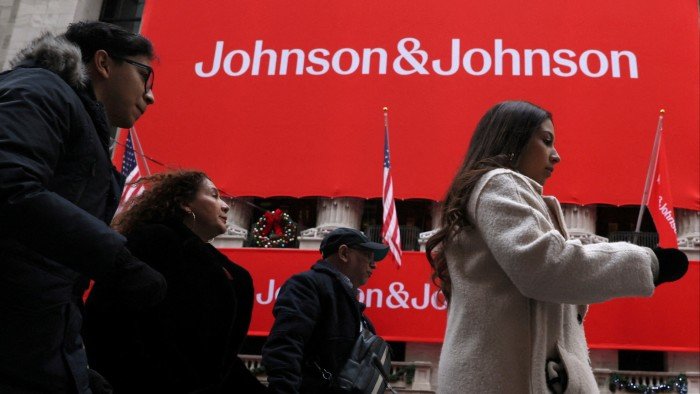Stay informed with free updates
Simply sign up to the Pharmaceuticals sector myFT Digest — delivered directly to your inbox.
Johnson & Johnson has shrugged off the impact of tariffs as the US-based healthcare group raised its earnings and sales guidance for 2025.
J&J, which warned of $400mn in duty costs following President Donald Trump’s “liberation day” tariffs announcement in April, said on Wednesday that second-quarter sales increased to $23.7bn year-on-year, above the $22.8bn forecast by analysts.
The drug and medical equipment maker increased its adjusted sales growth forecast for 2025 from 2-3 per cent to 3.2-3.7 per cent on Wednesday as it looked beyond global trade tensions.
J&J said strong sales and “favourable foreign exchange” rates had prompted it to increase its guidance after warning of “tariff costs” — mostly tariffs on medical devices — in its first-quarter report in April.
Chief executive Joaquin Duato at the time urged the US government not to apply levies on drugs, saying they could lead to shortages.
Trump has since threatened to impose a 200 per cent tariff on the pharmaceutical sector, but investors have bet it is unlikely to be implemented.
J&J’s shares are up 7.3 per cent year to date, outperforming rivals Eli Lilly, Pfizer and Merck as well as the S&P 500 index.
In the second quarter, J&J’s worldwide oncology sales shot up more than 20 per cent, offsetting declines in sales of its popular immune system medicine Stelara, which is facing a patent cliff. Sales in its smaller, medtech division increased 6 per cent.
Despite its growing sales, J&J is facing a threat from litigation alleging its talcum powder caused cancer. The company faces at least 60,000 talcum cases with more being filed daily, according to court documents.
In April, J&J said it would keep fighting these lawsuits after a US judge rejected a third attempt to settle the class-action claims through bankruptcy.
Goldman Sachs said in a July 10 report: “Our investor conversations point to some concern about the potentially trickier outlook in the back half of this year given the talc litigation overhang.”

